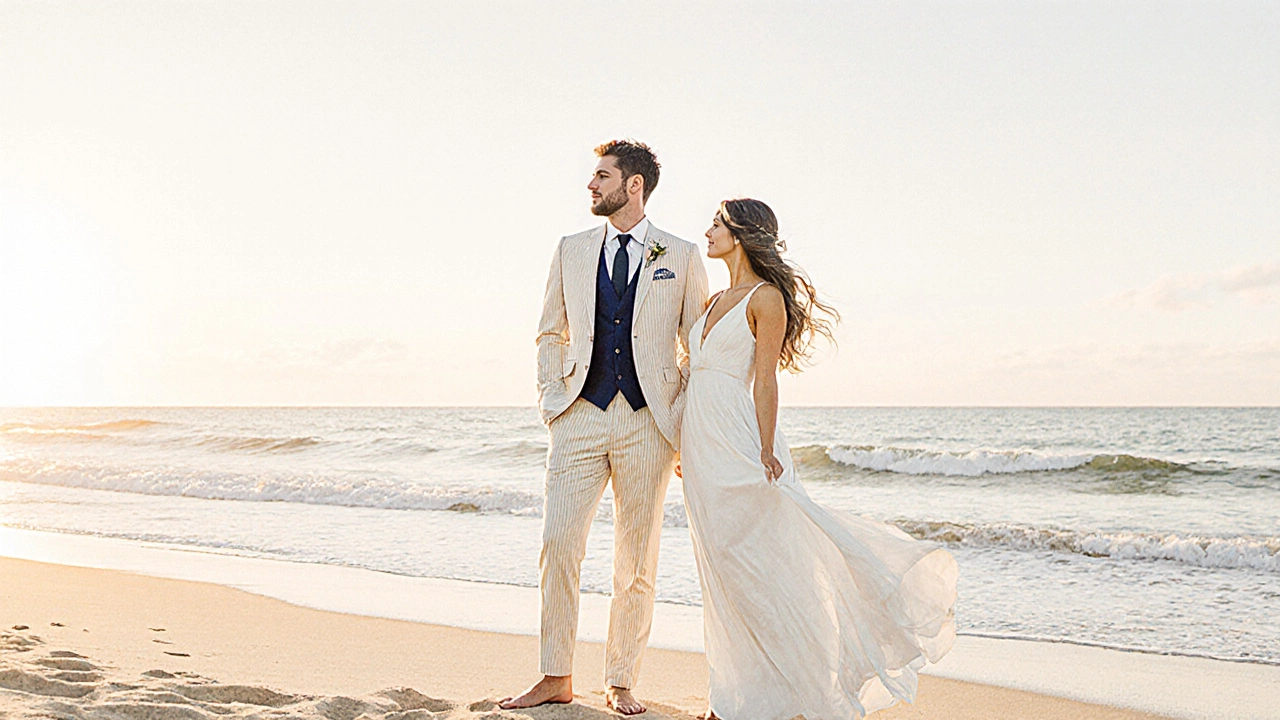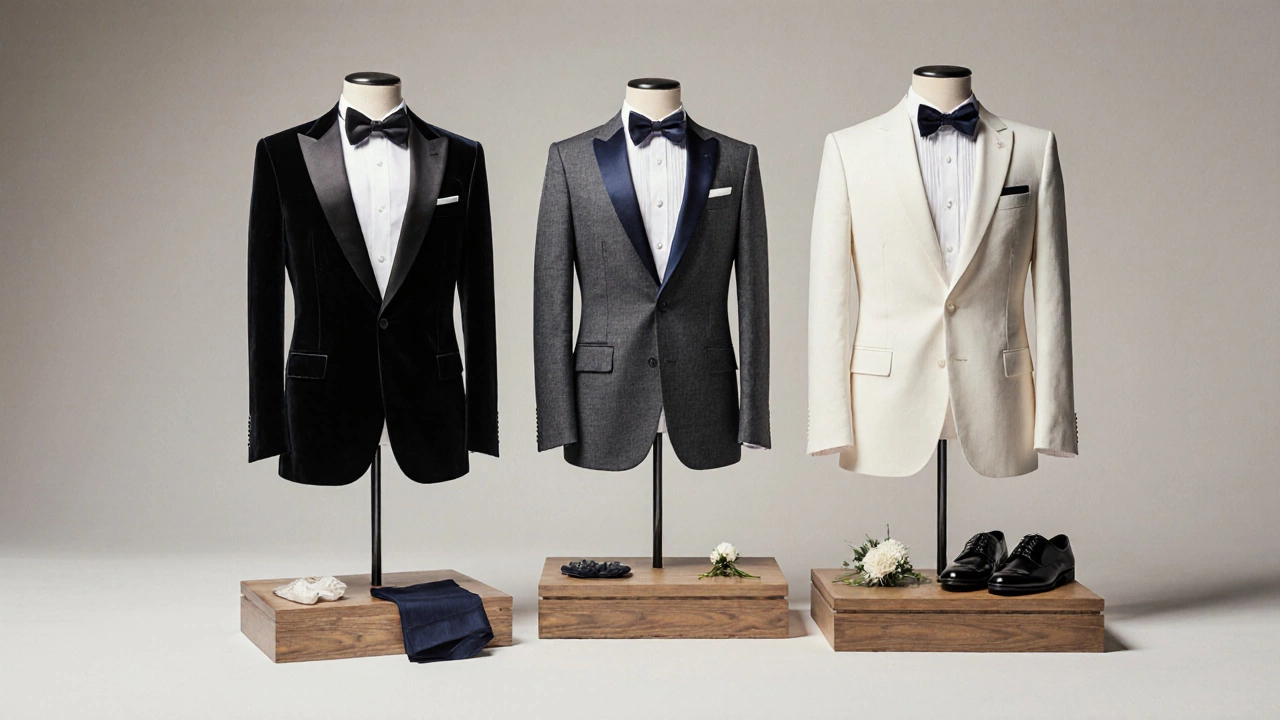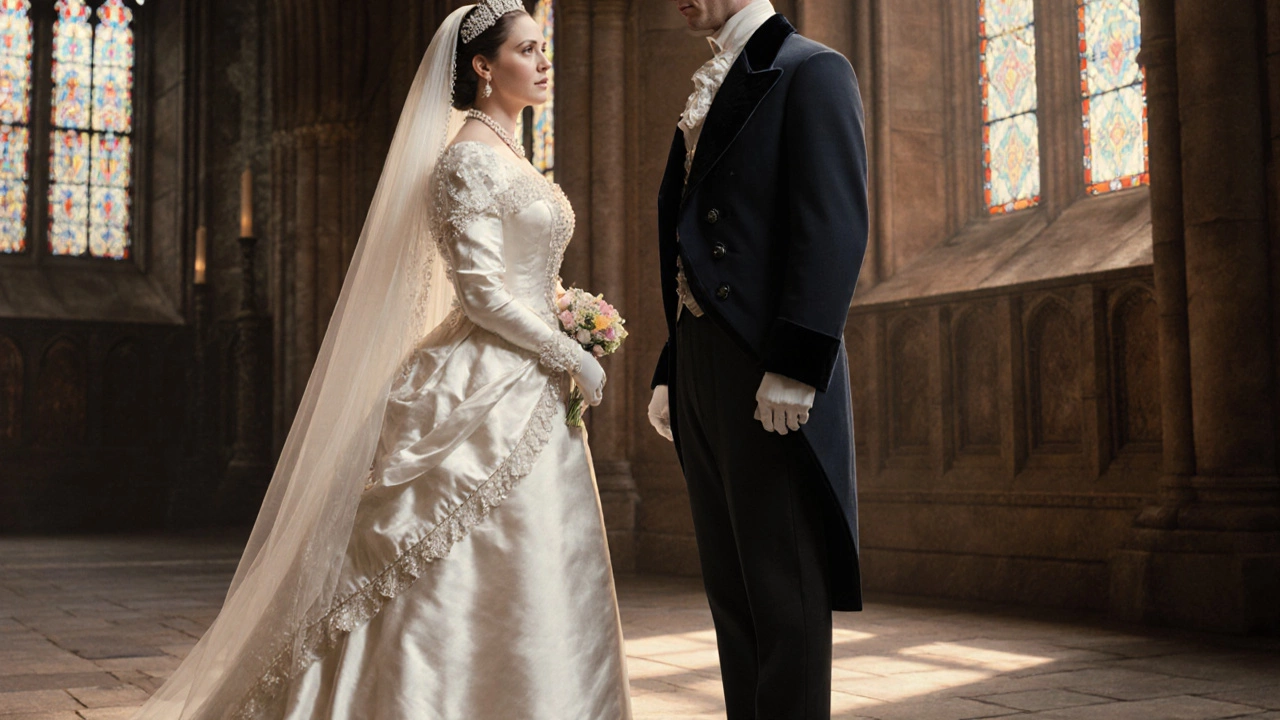When planning a wedding, groom's wedding attire is one of the first decisions couples face. While the bride’s gown is famously white, the groom usually turns to darker tones. This article unpacks why grooms white wedding attire is rare, traces the tradition back to royal courts, and shows how modern trends are shaking up the classic look.
Origins of the White Bride and Dark Groom
The image of a white wedding dress emerged in 1840 when Queen Victoria chose a white silk gown for her marriage to Prince Albert. The whiteness symbolised purity and set a new standard for brides worldwide. White wedding tradition quickly spread, but the groom’s wardrobe followed a different path. In 19th‑century Europe, gentlemen wore their everyday formalwear - usually dark frock coats, tailcoats, or morning suits - to signal status and seriousness.
Practical Reasons for Dark Suits
Three practical factors kept the groom in darker hues:
- Contrast: A dark suit creates a visual balance with the bride’s bright dress, ensuring the wedding photos highlight both partners.
- Formality: Dark colors such as black, navy, or charcoal were traditionally linked to evening wear and formal occasions.
- Availability: Tailors historically stocked dark fabrics for men’s formal attire, while white fabric was reserved for ceremonial uniforms or summer daywear.
Key Terms in Groom Dress Code
Understanding the vocabulary helps you navigate choices:
- Suit color: The primary hue of the jacket and trousers - black, navy, charcoal, ivory, etc.
- Tuxedo: A formal evening suit traditionally black with satin lapels.
- Morning suit: Day‑time formalwear consisting of a tailcoat, waistcoat, and striped trousers.
- Black tie: Dress code requiring a tuxedo, bow tie, and polished shoes.
Why White Is Still Uncommon for Grooms
Even though white is now a staple for brides, several cultural and aesthetic reasons keep it from becoming a go‑to for grooms:
- Historical precedent: The legacy of dark formalwear remains strong in Western wedding etiquette.
- Visual hierarchy: A white groom can unintentionally compete with the bride’s dress, especially in photos where the bride's veil and bouquet draw the eye.
- Seasonal practicality: In cooler climates (like Sydney’s winter weddings), dark fabrics provide warmth.

Modern Exceptions: When Grooms Do Wear White
Designers and couples are now experimenting with white or ivory suits for a fresh look. These alternatives work best when:
- The ceremony is daytime or beach‑side, where lighter tones feel appropriate.
- The bride’s dress includes ivory or cream tones, creating a cohesive palette.
- The couple wants a “together but distinct” vibe, using subtle differences in fabric texture.
Brands like Raf Simons and Tom Ford have showcased runway white tuxedos, signaling a shift in high‑fashion acceptance.
Popular Alternatives to Classic Black
| Color | Formality Level | Best Season | Typical Symbolism |
|---|---|---|---|
| Black | Formal / Black‑tie | Fall & Winter | Traditional, elegance |
| Navy | Semi‑formal | All seasons | Modern, trustworthy |
| Charcoal | Semi‑formal | Winter & Spring | Professional, understated |
| Ivory | Formal / Daytime | Spring & Summer | Romantic, soft contrast |
| White | Formal / Trendy | Summer & Beach | Fresh, contemporary |
How to Choose the Right Suit Color
Follow these quick decision points to land on the perfect hue:
- Venue lighting: Dark rooms favor lighter suits for contrast; bright outdoor settings can accommodate darker tones.
- Bride’s dress: Match or complement the bride’s palette. If she’s in ivory, an ivory or light gray suit creates harmony.
- Season: Warm colors (e.g., light brown) feel right in summer, while deep hues work in winter.
- Personal style: If you regularly wear navy at work, a navy suit feels authentic.
- Guest expectations: Some traditional families may expect a classic black tuxedo; discuss expectations early.

Tips for Making a White or Light Suit Work
- Choose fabrics with subtle texture (e.g., faint herringbone) to avoid looking washed out.
- Pair a white jacket with darker trousers for a balanced silhouette.
- Incorporate classic accessories - a black bow tie, polished oxford shoes, or a pocket square that echoes the bride’s bouquet.
- Schedule a full‑day fitting; lighter fabrics can show shrinkage after cleaning.
Real‑World Example: A Sydney Beach Wedding
Emily and Jake opted for a light ivory suit with a navy waistcoat. The beach backdrop reflected the soft tones, while Jake’s navy tie echoed the ocean. Guests commented that the palette felt “effortlessly elegant” and the photos captured a seamless blend of hues. This example shows how thoughtful color pairing can turn a non‑traditional suit into a highlight.
Frequently Asked Questions
Can a groom wear a white tuxedo without looking like a bride?
Yes. Pair a white tuxedo with dark accessories - a black bow tie, dark shoes, or a contrasting pocket square - to maintain a masculine silhouette while still offering a fresh look.
What is the difference between a tuxedo and a morning suit?
A tuxedo is evening wear, featuring silk lapels and usually a bow tie. A morning suit is daytime formalwear, consisting of a tailcoat, waistcoat, and striped trousers.
Is an ivory suit appropriate for a winter wedding?
Ivory works best in spring or summer when the light complements the season’s palette. For winter, darker shades like charcoal or navy are safer choices.
How can I make a dark suit look less formal for a casual outdoor ceremony?
Swap the formal shirt for a lightweight linen button‑down, add a patterned pocket square, and choose leather loafers instead of polished oxfords.
Do cultural traditions affect groom suit color?
Absolutely. In Indian weddings, bright hues like maroon or gold are common, while Scottish ceremonies may feature tartan kilt ensembles. Always consider cultural expectations.
